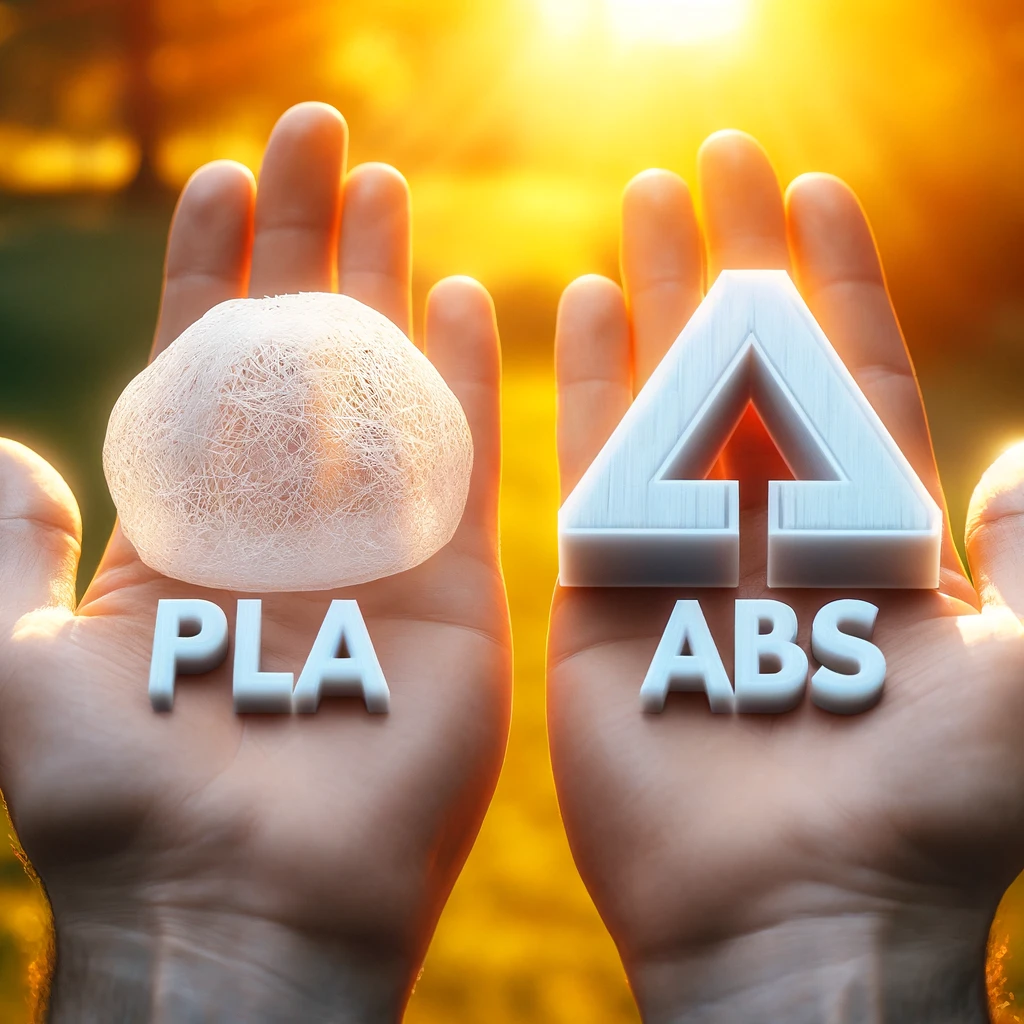PLA vs. ABS: Which is Better for Outdoor Use?

When it comes to 3D printing, choosing the right material for your project is crucial, especially if the object will be exposed to outdoor conditions. Two of the most commonly used materials in 3D printing are PLA (Polylactic Acid) and ABS (Acrylonitrile Butadiene Styrene). Both have unique properties that make them suitable for various applications, but which one is better for outdoor use? In this article, we’ll compare PLA and ABS to help you make an informed decision for your next outdoor 3D printing project.
Understanding PLA and ABS
PLA (Polylactic Acid):
PLA is a biodegradable thermoplastic made from renewable resources like cornstarch or sugarcane. It’s known for being easy to print with, having low warping, and producing a high-quality finish. PLA is ideal for beginners due to its ease of use and minimal environmental impact.
ABS (Acrylonitrile Butadiene Styrene):
ABS is a petroleum-based thermoplastic known for its strength and durability. It has higher impact resistance than PLA and can withstand higher temperatures. However, ABS requires a heated bed and controlled printing environment to prevent warping and cracking, making it more challenging to print with than PLA.
PLA vs. ABS: Key Factors for Outdoor Use
-
UV Resistance:
- PLA: PLA is not UV-resistant and tends to degrade when exposed to direct sunlight for extended periods. The color can fade, and the material can become brittle over time.
- ABS: ABS has better UV resistance than PLA. While it can still degrade under prolonged UV exposure, it retains its properties longer than PLA.
-
Temperature Resistance:
- PLA: PLA has a lower glass transition temperature, typically around 60°C (140°F). It can become soft and deform in high temperatures, making it unsuitable for hot outdoor environments.
- ABS: ABS can withstand higher temperatures (up to 100°C or 212°F) without deforming, making it more suitable for outdoor use in warmer climates.
-
Moisture Absorption:
- PLA: PLA absorbs moisture from the air, which can affect its mechanical properties and make it less durable outdoors, especially in humid conditions.
- ABS: ABS is less prone to moisture absorption, maintaining its strength and integrity better in outdoor environments.
-
Durability:
- PLA: While PLA is strong, it’s not as durable as ABS, especially under mechanical stress. Outdoor use can cause PLA to crack or break over time.
- ABS: ABS is known for its toughness and impact resistance, making it a more durable option for outdoor applications that require strength and longevity.
Which is Better for Outdoor Use?
For outdoor use, ABS is generally a better choice than PLA. Its superior UV resistance, temperature tolerance, lower moisture absorption, and higher durability make it more suitable for outdoor environments. However, if you’re looking for an environmentally friendly option and the object won’t be exposed to extreme weather conditions, PLA could still be viable for short-term outdoor use.
When choosing between PLA and ABS for outdoor applications, consider the specific environmental conditions and the lifespan you expect for your printed object. This will help you select the best material for your needs.



